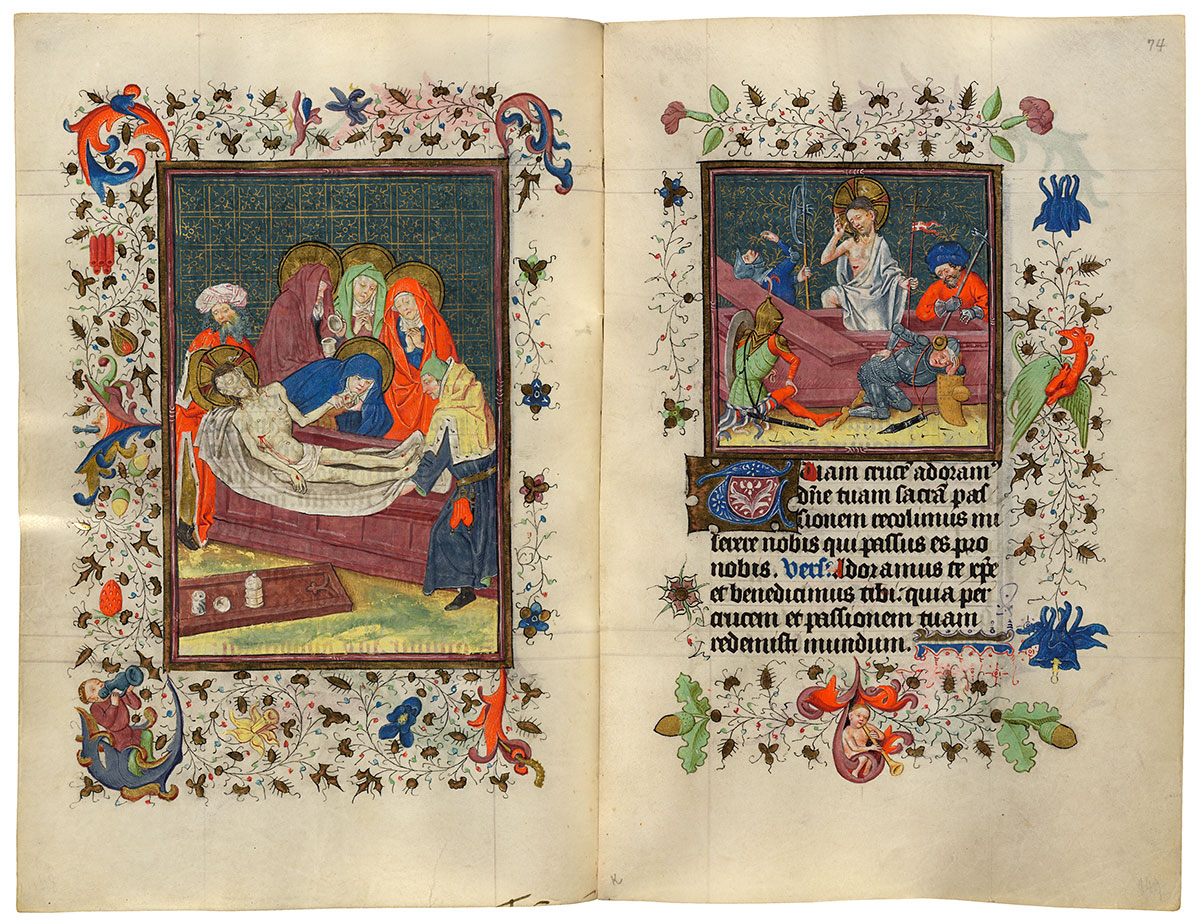MS M.917/945, ff. 73v–74r

Entombment
Resurrection
Purchased on the Belle da Costa Greene Fund with the assistance of the Fellows and with special assistance of Mrs. Frederick B. Adams, Sr., Mrs. Robert Charles, Mr. Laurens M. Hamilton, The Heineman Foundation, Mrs. Donald F. Hyde, Mrs. Jacob M. Kaplan, Mrs. John Kean, Mr. Paul Mellon, Mr. and Mrs. Charles F. Morgan, Mr. Lessing J. Rosenwald, Mr. and Mrs. August H. Schilling, Mrs. Herbert N. Straus, Mrs. Landon K. Thorne, Mrs. Alan Valentine, Mr. and Mrs. Arnold Whitridge, and Miss Julia P. Wightman, 1970
The Hours of the Passion conclude with the Resurrection, a subject rarely included in such cycles since the event is not part of Christ's Passion. Typical of
his love of intricacy, the Master of Catherine of Cleves has Christ step out of his tomb backwards and arranges the four soldiers in complicated positions, none of which look conducive to sleep. In the bottom border, a boy blows a horn, an allusion to the sound of the trumpets that will herald Christ's Second Coming at the Last Judgment.
Hours of the Passion
The Hours of the Passion are often found in Books of Hours following, as in Catherine's manuscript, the Hours of the Virgin. The lengthy psalms are supplemented with prayers that narrate the story of Christ's Passion. If Catherine had little time, she might pray Matins alone, where the three lessons encapsulate the entire Passion, from Christ's Arrest until his Death on the Cross. A slower meditation is provided by the remaining Hours. The drama begins at Vespers, whose prayer narrates events from Holy Thursday: the Last Super and Christ Washing the Feet of the Apostles. Compline's prayer relates Christ's Agony in the Garden. The prayer at Lauds relates to Christ Before Pilate and Peter's Denial. The Passion concludes with None's prayer telling of Christ's Death on the Cross.
Image courtesy of Faksimile Verlag Luzern